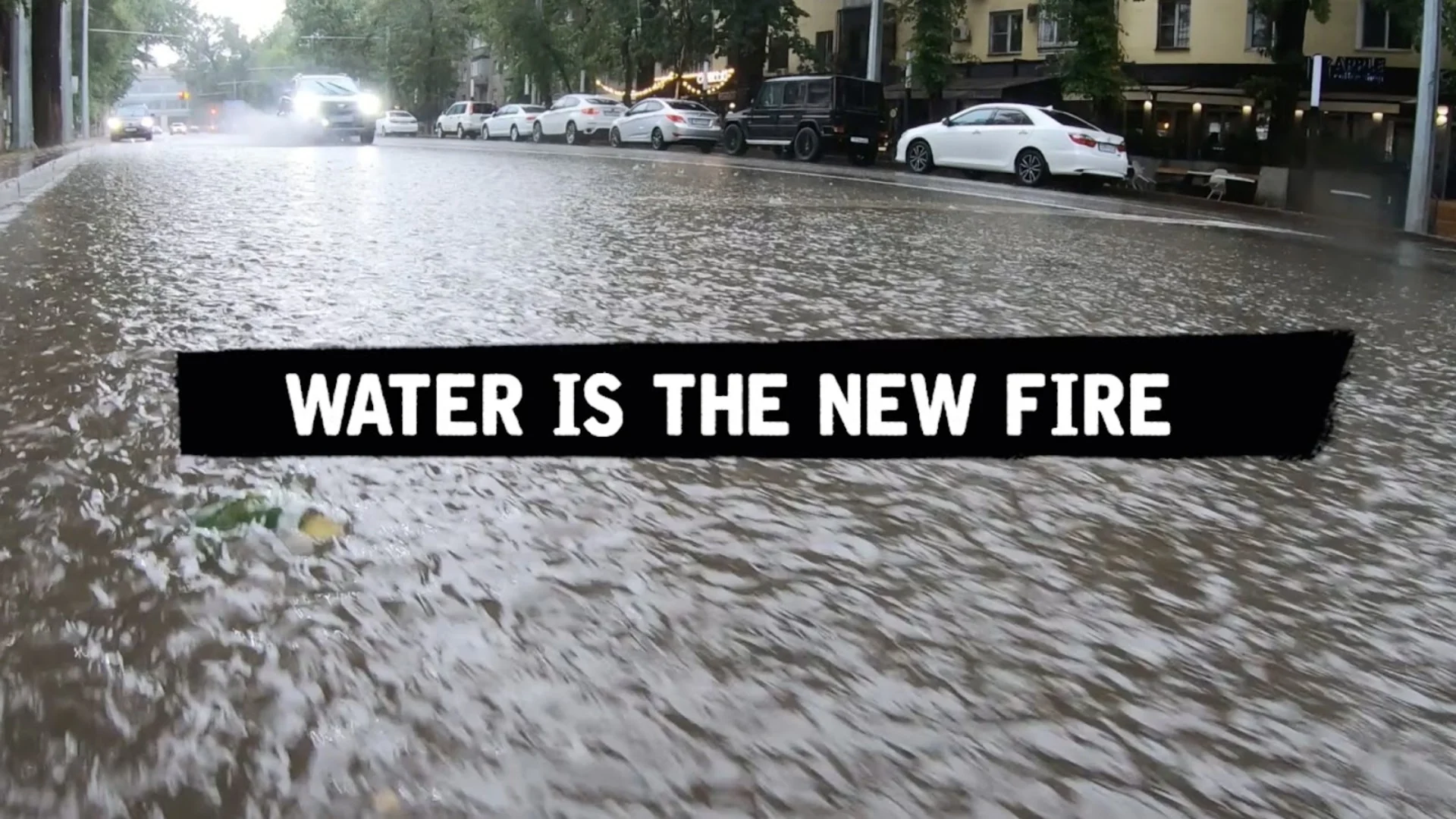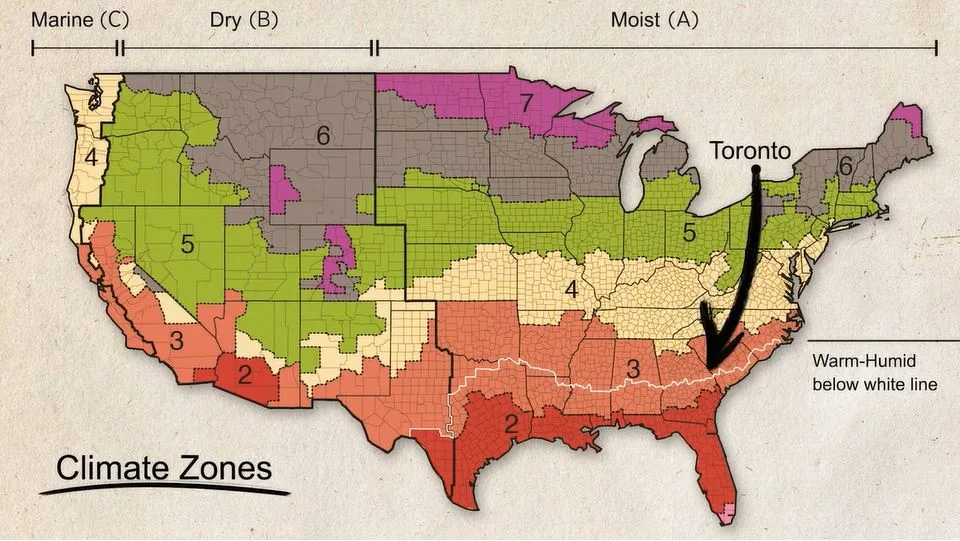
As climate change impacts flooding, swaths of Canada risk becoming uninsurable
In the middle of a busy re-election campaign during the summer of 2014, Burlington, Ontario mayor Rick Goldring’s basement flooded. More than 5.5 feet of water was gushing through it due to record rainfall. Goldring wasn’t alone: more than 3,000 homes in the city were flooded, and roads and businesses were severely impacted. “As far as the volume of rain, what was really off the charts was the intensity of the rain and how quickly it fell,” Goldring told The Weather Network (TWN) in a recent interview.
Luckily, Goldring’s family was able to deal with the cleanup, and he had adequate insurance. He could turn his attention to helping the many other families who were affected by the floods, especially those who lived in housing cooperatives, many of whom didn’t have proper insurance coverage. “That was more impactful than what I had going on in my own house,” Goldring said. The City, along with the province, ended up raising almost $3 million to distribute to families in need to clean up the damage left behind by the floods.
Nearly 10 years on, Goldring is no longer mayor, but this is one of the experiences that sticks with him most. “We as a country need to be better prepared to deal with these emergencies when they come up, because we're going to have more and more weather events that will be very impactful for many people,” he said.

Flooding on the Don Valley Parkway in Toronto in 2013. (Still via Water is the New Fire).
But many parts of Canada are still struggling to keep up. Flooding season has been in full swing across Canada in recent months. Intense rainfall drenched Ottawa in early August, dropping the majority of 72 mm of rain in just 90 minutes, causing flash flooding and overflowing sewers. Also earlier in the month, Halifax was hit with its second significant flooding event of the summer. Alberta and B.C., too, saw flash flooding following the start to the wildfire season this year, which was exacerbated by the lack of trees and vegetation as a result of the fires.
This is just a snapshot of the flooding situation in recent years, a calamity brought into sharp focus during the catastrophic floods in southern B.C. in 2021. Those have been described as one of the costliest natural disasters in Canadian history at around $9 billion.
For decades, fire was the top risk for homeowners and lenders. But today’s changing weather patterns have resulted in a dramatic shift in property risk that has made overland and sewer backup a predominant risk for homeowners. Many Canadians are unknowingly purchasing and building homes and other infrastructure in areas that not only have a high flood risk, but also face wildfire and other issues associated with climate change, according to the Canadian Institute for Climate Choices. This translates to soaring insurance costs and the prospect of not getting insurance altogether, meaning that people get stuck with unaffordable costs in the event of an extreme weather event, if they’re able to get a mortgage at all. These concerns come as the federal government, however, is planning to roll out a special flood insurance program that will become available to property owners across the country in 2025.

Blair Feltmate, head of the Intact Centre on Climate Adaptation at the University of Waterloo. (Still via Water is the New Fire)
Until then, Blair Feltmate, the head of The Intact Centre on Climate Adaptation at the University of Waterloo, and other experts told TWN that extreme weather events will only get worse. However, we still have an opportunity to adapt and build resilience. It’s the only way forward, he says, particularly when it comes to flooding. “The good news is, to a large extent, we now know the growing risks of flood risk in the country,” Feltmate said. “There’s the need to act with a strong sense of urgency to put adaptation measures in place to protect cities, down to individual properties, to protect them from growing flood risk.”
Flooding and insurance
The problem of rising insurance rates, and a looming crisis of uninsurability, has become a growing concern around the world. A recent report by a climate risk assessment group in Australia, for example, found that approximately one in 25 homes there face a high risk of becoming uninsurable by 2030 especially due to riverine flooding. In the U.S., the Federal Emergency Management Agency overhauled its flood insurance policies to align with the new realities of climate change, with around four million property insurance holders expected to get hit with a rate spike.
Back in Canada, it’s estimated that about four million people here currently live in areas that have already been impacted by flooding, and up to 10 per cent of all Canadian homes are or will soon become uninsurable as a result of climate change. Uninsurable in this context means that premiums are so high that the average homeowner simply can’t afford it.
The insurable losses associated with the B.C. floods in 2021, for example, are calculated to be at least $450 million. However, Feltmate says that the actual toll is much greater, as many people in the province were already uninsurable for flood risks. “For every dollar in insurable loss, as a rule of thumb, there’s about three of four dollars of uninsurable loss realized,” he explained. In the case of B.C., he said it’s likely closer to six dollars in uninsurable losses due to the fact that there’s a growing swath of the population who cannot get insurance for flood damage, whether it’s basement flooding, overland flooding, or backed-up sewers.
Canada has long been woefully behind when it comes to providing comprehensive and up-to-date flood maps, which shows areas that may become covered by water or where the water height may reach during a flood event. Cheryl Evans, director of flood and wildfire resilience at the Intact Centre on Climate Adaptation, told TWN that having this up-to-date information is crucial for understanding risks, and potentially saving peoples’ livelihoods and lives. “There’s some really positive things that we can be proud of,” Evans said. “And I like to try to focus on those positive steps that are being taken.”
Earlier this year, the federal government announced it would fund a new program, to be launched in April 2025, that would make flood insurance available to property owners across Canada. “We know it can’t come quick enough,” Craig Stewart, vice-president of climate change and federal issues for the Insurance Bureau of Canada, told SaltWire. The program would allow those who live in flood-prone zones that are deemed extremely high risk, and therefore are unable to purchase flood insurance, to have their premiums covered through a Crown corporation that supports private insurance companies. A caveat is that disaster assistance from the federal government would not be available to those who do not purchase the insurance.
In addition to the new flood insurance program, the federal budget allocated $15.3 million over the next three years for an online portal where property owners could find out about their exposure to flooding.

What Toronto's climate zone could resemble in the not-too-distant future. (Still via Water is the New Fire)
Real estate paradox
Seattle-based real estate brokerage Redfin recently announced that it’s making climate risk information available on its home listings, providing a score out of 100. It’s like a “walk score” seen on many real estate listings, but it’s based on the area’s future risk of wildfire, heat, storms, and drought. Canada’s federal housing agency, the Canada Mortgage and Housing Corporation (CMHC), is in the process of developing its own real estate risk scores for wildfire and flood, according to The Logic. The move was driven in part by the home insurance industry that was sent into a tailspin by intense flooding in Atlantic Canada, Quebec, and B.C.
For Chris Chopik, a Toronto-based real estate expert who specializes in climate risk, this type of transparency is key for having a healthy real estate marketplace where risk is less disruptive because buyers will be fully informed of any climate-related threats associated with the property. At the same time, however, Chopik contends that transparency when it comes to properties with climate risks may not be financially appealing for all parties involved in a property transaction. It’s what he refers to as a “valuation paradox” where the realtor doesn't want to necessarily point out that the home in question is on a floodplain, for example, and the seller doesn’t want to miss out on a higher listing price as a result. The lender on that home also doesn’t want that house to be a toxic mortgage, so the lender has an incentive to preserve the value as much as possible.
“In the real estate practitioner arena, and the entire housing supply chain, it appears to me that there is very little being done to inform purchasers in particular of the potential risks that they’re buying into,” Chopik told TWN. Chopik’s advice to those who are buying or selling homes is to not be afraid of finding out climate risks. “Much better to find out early that you have some risk and then figure out what you can do about it, than it is to find that you could have done something about it after you have a major event that disrupts your life,” he said.

Port Lands Flood Projection Project under construction in Toronto. (Still via Water is the New Fire)
But for homes that keep repeatedly getting hit by extreme weather or have been deemed uninsurable for that reason, Feltmate says that residents facing the highest flood risk may be forced to relocate, or what’s called a “strategic retreat.” It’s an option of last resort where governments will pay residents a buyout to help them relocate to a safer area. For those who remain, they do so at their own risk. Chopik pointed to efforts undertaken by the province of Quebec after the Gatineau floods in 2019 as one such example. The government offered up to $200,000 to people who decided to relocate.
Many experts point to Edmonton as the Canadian city that is among the most prepared to adapt to severe flooding after it grappled with flooding issues several years ago. “They were faced with a lot of challenges with particularly sewer backup flooding and they disclosed flood maps publicly and the municipal council poured money into research and public consultation about not just these are the high risk areas but what are the best ways to support resilience,” Evans explained. “What happened is it increased the level of trust in the municipal government. Property values stayed relatively stable. It’s a good news story.”
Resilience in Kitchener
A growing number of municipalities are collaborating with groups, both for-profit and nonprofit, to connect homeowners with subsidies and other measures to help protect their homes from flooding and other climate-related problems. Kitchener, Ontario is taking steps to help residents adapt to climate change through water conservation, waste reduction, and addressing home energy efficiency. The city has teamed up with Reep Green Solutions, which offers consultations for homeowners on how to reduce the amount of water run-off on their land.
“The more people we can encourage to do that type of behavior, the less runoff is exiting property that is aggregating some of the pinch points in our stormwater system,” Rebecca Robinson, a landscape designer with Reep Green, told TWN. Essentially her work can help people adapt their yards to be mini watersheds with stormwater management ponds on them and become a type of rain garden.
Since the program launched two years ago, the number of participants has doubled, which Robinson sees as a promising sign that people are realizing their roles in adapting to climate change. She said that around half of those who seek Reep Green’s assistance had issues with basement flooding.
“Hopefully, we'll see dozens of miniature green infrastructure projects coming on into people's yards,” said Robinson. “Everybody has to look at their resources and what they own and figure out what we can do to collectively participate in this solution.”











